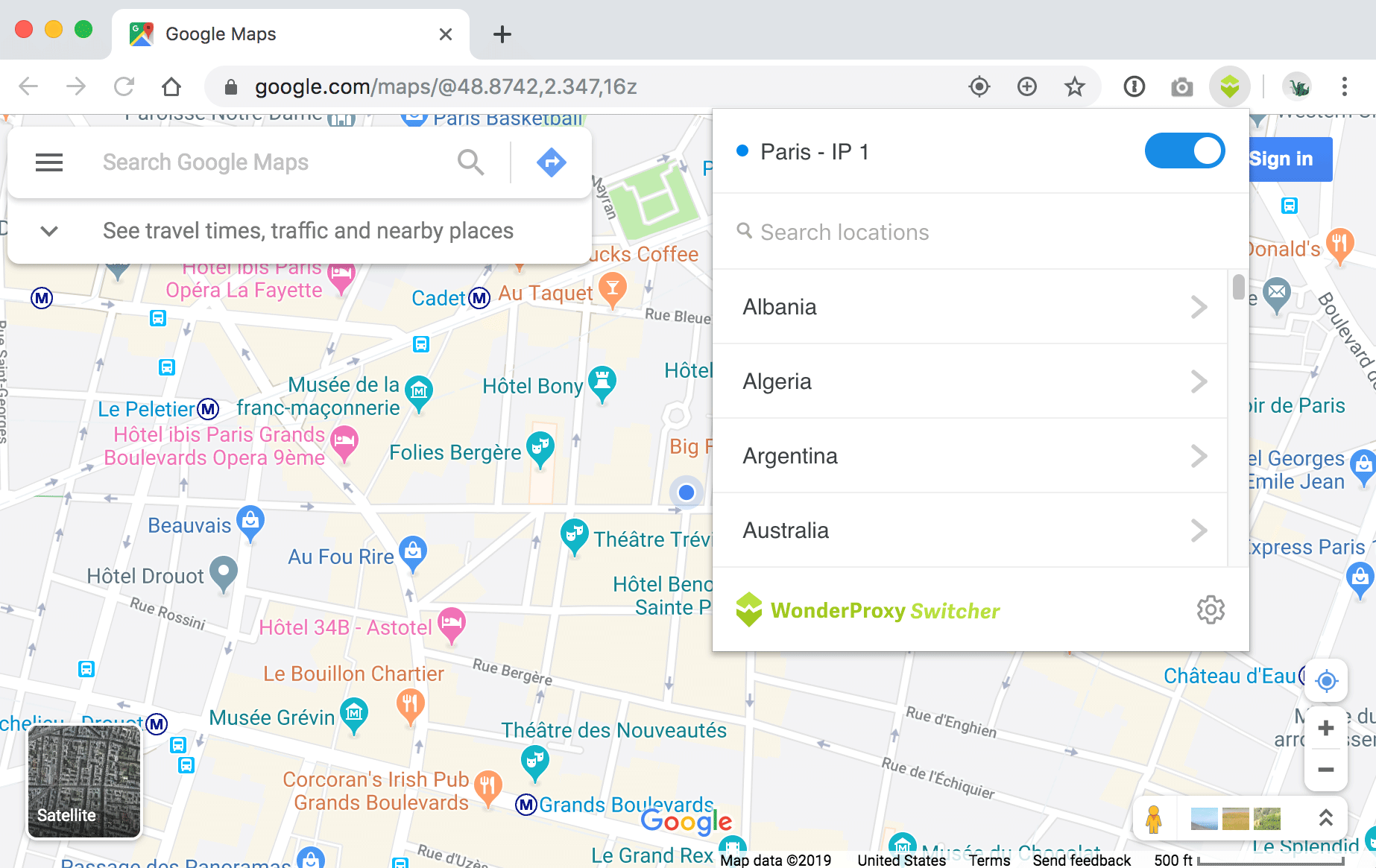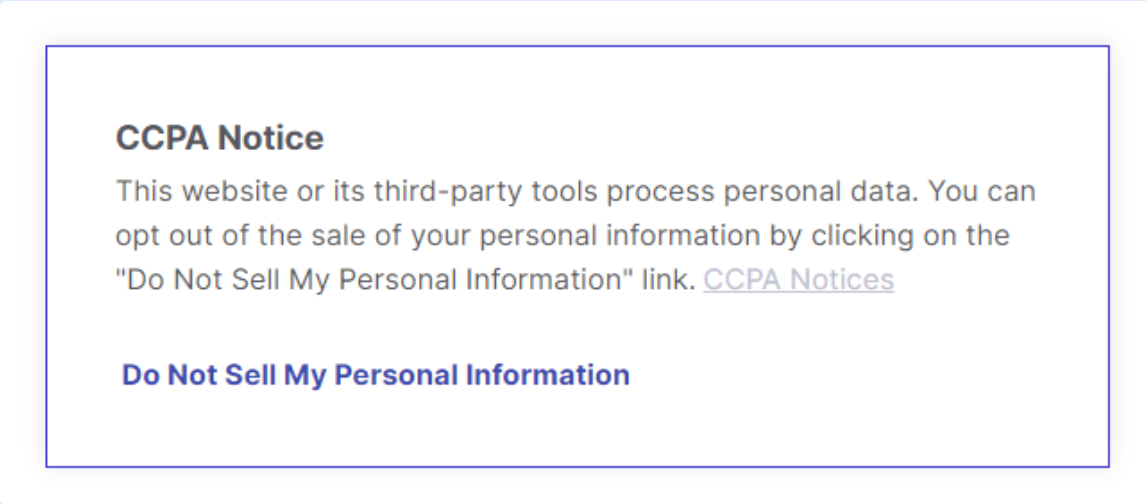Testing Country-Specific Compliance Messages (GDPR, CCPA) with WonderProxy
If you’ve ever tried to make your website compliant with privacy laws like GDPR or CCPA, you know it can feel like juggling multiple moving legal targets. You implement a cookie banner for Europe, update your privacy policy for California, add an opt-out link for ad tracking, and then hope everything displays correctly.
But most of us work from a single location. We can’t just hop over to Paris or Los Angeles to check if our compliance messages are showing up correctly.
WonderProxy lets you see what your site looks like to visitors in different parts of the world, so you can confirm your GDPR notices display correctly in France and your CCPA notices pop up in California. It also avoids annoying visitors with irrelevant compliance banners outside these regions
Geographically targeted compliance testing matters
Privacy laws like GDPR (General Data Protection Regulation) in the EU and CCPA (California Consumer Privacy Act) enforce rules based on location. You'll need to understand where these laws apply to deliver the right compliance messages to the right visitors.
- GDPR applies to all EU member states (plus a few extra territories like Norway, Iceland, and Liechtenstein). It covers any business that processes personal data in those areas, even if the business itself is based elsewhere.
- CCPA gives California residents rights to access their data, request deletion, and opt out of its sale.
Both regulatory schemes require your website to detect where a visitor is coming from in real time and serve them the correct message.
The risks of ignoring compliance testing
While you may not face immediate consequences for small oversights, failing to fully comply carries significant risks. Here’s what can happen if you don’t thoroughly test your location-based compliance features:
- Visitors in the EU might not get a GDPR-compliant cookie consent prompt, putting you at risk of fines.
- California residents may struggle to locate their “Do Not Sell My Personal Information” link, potentially violating CCPA requirements.
- Visitors outside those regions may see irrelevant pop-ups, which can frustrate them and reduce your conversion rate.
Regulators worldwide are increasingly vigilant, and enforcement actions are on the rise. In other words, testing is not optional here. It’s a key part of staying compliant and providing a good user experience.
Why WonderProxy beats traditional testing methods
It's tempting to think, “I can just use a VPN for this.” But while VPNs are great for masking your location, they often fail to replicate real local experiences and can be blocked by some countries.
WonderProxy is different:
- It uses residential-style IPs across global cities, enabling precise, automated testing exactly where your visitors are.
- It allows you to test city-level targeting, which is crucial for CCPA compliance, as it specifically applies to California, not the entire US.
- It integrates with automation tools (like Selenium or Cypress). As a result, you can run repeatable, scripted tests in different locations without manually clicking around.
- It's easy to use. QA teams and developers can switch locations instantly without reconnecting or adjusting settings.
In short, WonderProxy is purpose-built for reliable, location-based web testing, making it well-suited for verifying compliance messages worldwide.

Testing GDPR compliance messages
GDPR is the most widely applied privacy regulation for websites serving international audiences, making it the first priority in most compliance testing strategies.
Step 1: Confirm your detection logic
Your site likely uses IP geolocation to determine whether to display a GDPR message. This means you need to check multiple EU countries, not just one. Here's why:
- Geolocation databases can vary slightly, and sometimes a country’s IP range can be misclassified.
- You want to ensure consistent behavior across the EU, because GDPR applies everywhere in it.
With WonderProxy, you can test from Paris, Berlin, Madrid, Amsterdam, and more in just a few clicks.
Step 2: Verify the message is correct and complete
GDPR cookie banners must be explicit and granular, else they fail to meet regulatory requirements and risk penalties.
- No pre-checked boxes for consent.
- Clear “Accept” and “Reject” options (not just “Accept”).
- A link to your privacy policy and details on what you’re tracking.
When testing, don’t just check if the banner shows up. You'll need to read it carefully as if you were a compliance officer. Check that the banner language aligns with local expectations and translates accurately. For instance, does “Reject” actually reject cookies, or does it still set tracking scripts?
Step 3: Test functionality
Automated testing promotes repeatability and speeds up your QA process. Use WonderProxy with a Selenium script to:
- Load your site from a Paris IP.
- Click “Reject All.”
- Refresh and confirm that no tracking cookies are present.
- Do the same for “Accept” and make sure the correct cookies are loaded.
If your site fails at this stage, it remains non-compliant under GDPR, regardless of how polished the banner appears. The law requires actual enforcement of user choices, not just visual prompts.
Testing CCPA compliance messages
While GDPR applies to site visitors from an entire country, CCPA testing is more complex because it targets only visitors from California. Here is how you can meet this challenge.
Step 1: Test California IPs vs. other US states
With WonderProxy, you can select test locations like Los Angeles or San Francisco and compare them to non-California locations such as New York or Chicago.
- California site visitors should see your “Do Not Sell My Personal Information” link.
- Site visitors from other states shouldn’t see it (unless you choose to display it globally for simplicity).
Testing both California and non-California IPs guarantees compliance notices appear only where legally required, maintaining coverage without cluttering the experience for other visitors.

Step 2: Test the functionality of the opt-out
Before you check the box yourself, make sure it actually triggers all the required actions behind the scenes. The opt-out mechanism under CCPA involves more than a checkbox. It's a mini-process in itself.
When you test from a California IP:
- Click the opt-out link.
- Confirm the form works, and that data collection actually stops for that user/session.
- Verify that the opt-out state is retained when visitors return to the site.
Additionally, test that the opt-out preference persists across devices or browsers after visitors log in. CCPA requires consistent compliance regardless of how customers access your site.
Step 3: Review edge cases
Testing standard scenarios isn’t enough. Edge cases can reveal hidden compliance failures that impact site visitors.
- A California IP with the browser language set to Spanish (for translation checks).
- A California visitor using a VPN to appear from another US state (determine if your logic still works).
- Site visitors traveling between states (make sure your detection updates quickly).
Catching these edge cases early can save you from enforcement issues later, when visitors experience them in the wild.
Tips for more reliable testing
Location-specific compliance testing involves many complexities. Here are some practical lessons from experience:
- Don’t test only on staging: Some geolocation services behave differently in staging environments. Always confirm your compliance messages on production, even if reluctant to do so.
- Automate whenever possible: Manual tests are suitable for one-off checks, but compliance is ongoing. Laws change, IP databases update, and new code rolls out. If you can run a daily automated test across multiple locations, you’ll catch issues before regulators (or angry customers) do.
- Test across both desktop and mobile: Your mobile site might load a different template than you expect. If so, it's easy for compliance banners to get lost or truncated there.
- Document your tests: Dated WonderProxy test results can demonstrate your proactive compliance during audits.
- Work closely with legal: Your dev team may think a banner is fine, but legal may say otherwise. Get a sign-off from your compliance or legal advisor on the exact wording and placement before you lock in your testing scripts.
How WonderProxy fits into your workflow
WonderProxy fits naturally into developer, QA, and legal workflows to support continuous compliance testing. Each team can use it in ways that keep compliance on track:
- For developers: Test changes locally by routing your browser or test scripts through different locations before deploying.
- For QA teams: Incorporate WonderProxy into your regression test suite to ensure compliance banners still work after updates.
- For legal/compliance teams: Occasionally spot-check the live site to confirm that notices and opt-out links are appearing as required.
WonderProxy supports tools like Selenium, Cypress, and Puppeteer, making it easy to build a fully automated geo-compliance check. Set it to run overnight and alert you if anything breaks.
The tangible (and intangible) costs of not testing
Beyond legal matters, failing to deliver the correct compliance messages to the appropriate visitors is a trust concern. Site visitors in Europe expect to see GDPR banners. If they don’t, they may wonder if you’re mishandling their data. Californians increasingly expect to see their CCPA rights spelled out.
If these measures are implemented incorrectly, your organization could face:
- Regulatory fines (up to €20 million - roughly $23.3 million - under GDPR).
- Class-action lawsuits in California.
- Reputation damage, the kind that makes visitors think twice before signing up for your service.
In other words, location-specific compliance testing isn’t just a box-checking exercise. It’s part of building a trustworthy brand.
Key takeaways
Testing country-specific compliance messages like GDPR and CCPA isn’t glamorous work. You’re not adding shiny new features or redesigning your homepage. But it’s surprisingly easy to risk errors without the right tools.
WonderProxy makes this much simpler by giving you the ability to see your site from anywhere in the world, accurately and repeatably. You can:
- Verify your detection logic.
- Check message accuracy and translation.
- Confirm functionality works as intended.
- Automate it so you don’t have to remember every time you ship an update.
It’s one of those investments that pays for itself the first time it catches a compliance failure before your customers or a regulator does.
If you’re committed to compliance, don’t leave it to chance. Start testing your GDPR and CCPA messages with WonderProxy today to protect your site visitors and your business.